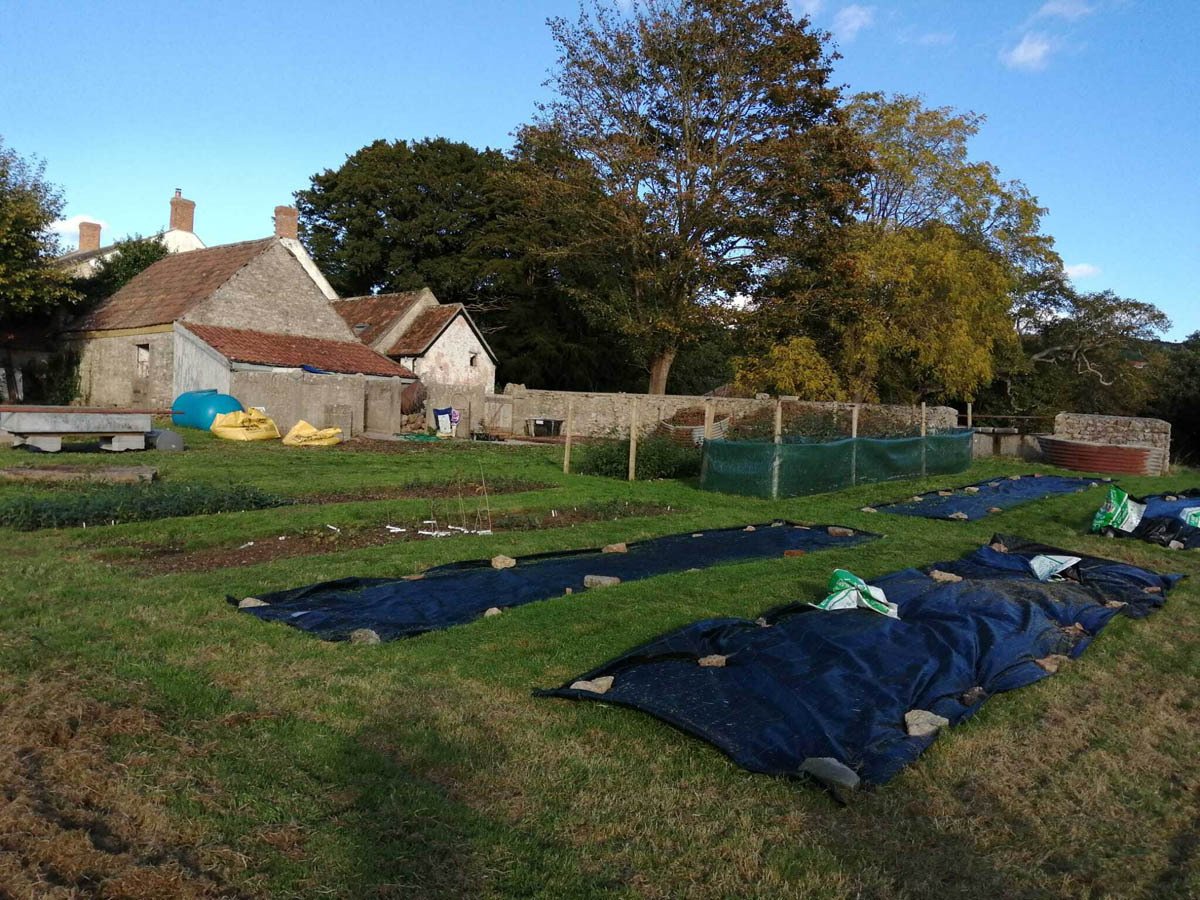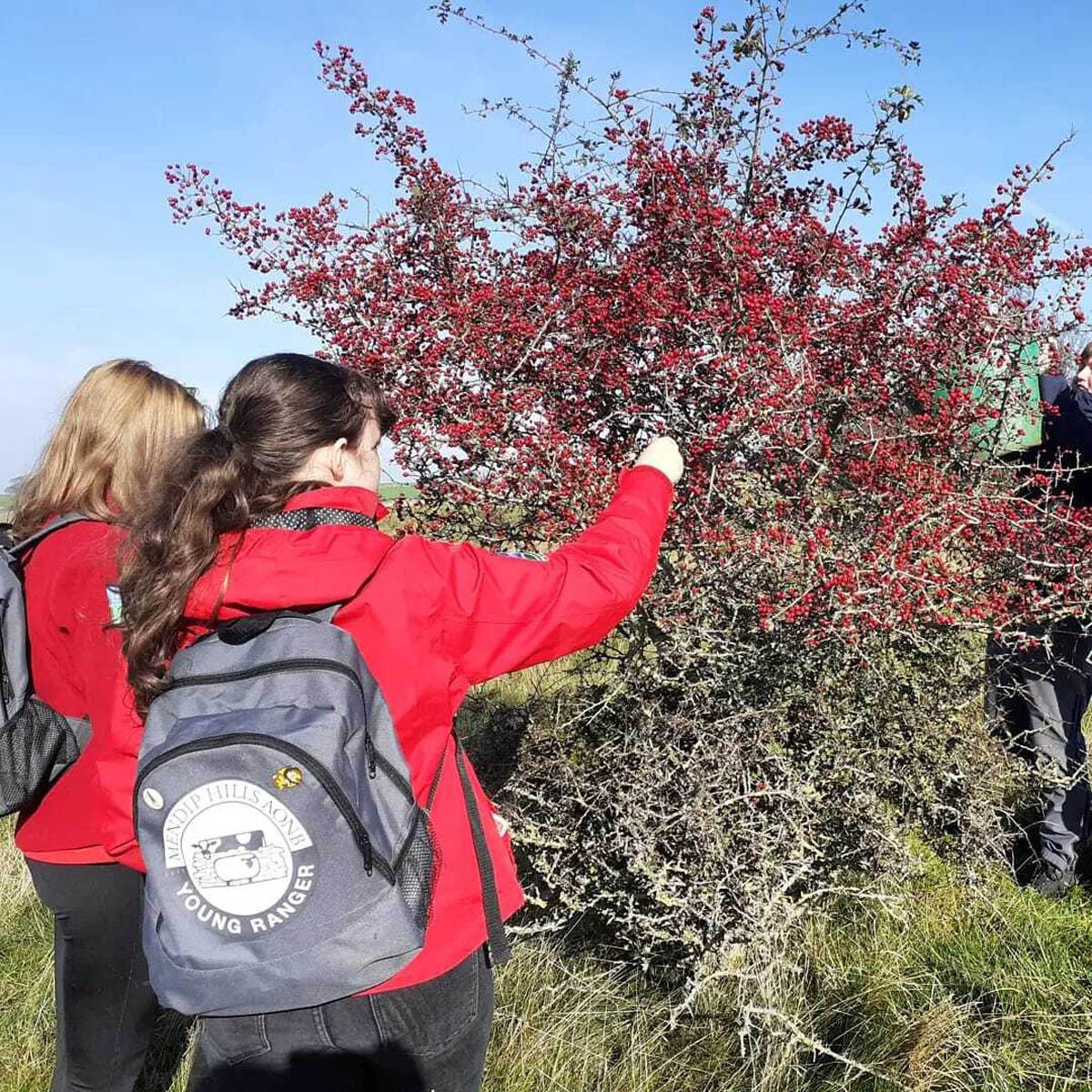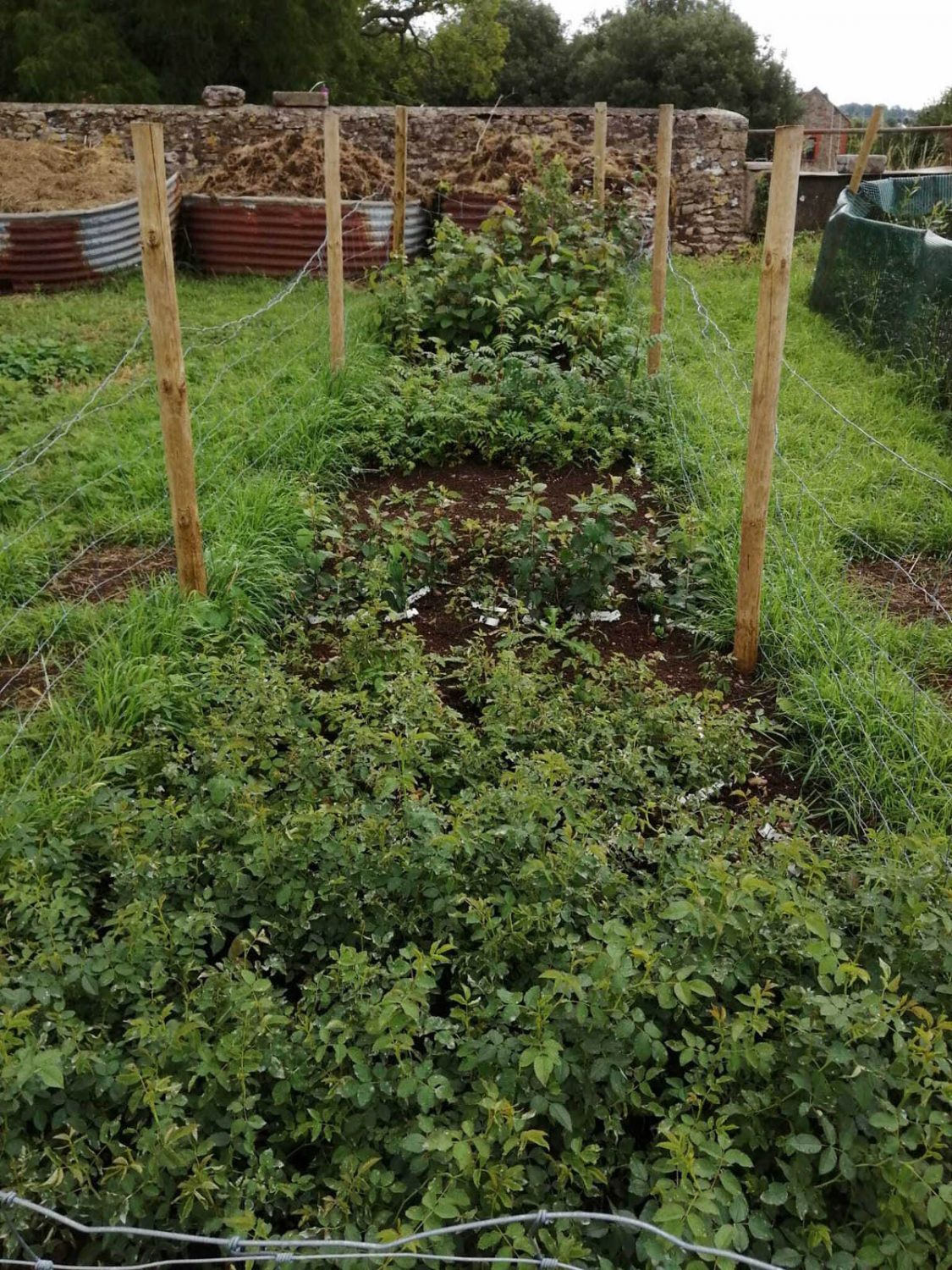
It started with a throwaway remark. At an early, virtual meeting of the Westbury Sub Mendip parish tree group someone wondered aloud about whether it might be possible to start a tree nursery. One member left the Zoom call and returned after five minutes. He had consulted his wife and they were happy for us to use a spare piece of their land for that purpose. Our bluff was called.
The land was close to the centre of the village and adjacent to a public footpath. Unfortunately, it was also waist deep in brambles and nettles and littered with all kinds of debris – old pig netting, builders’ waste, hedge trimmings and the like. It took several months of regular work parties to subdue the unwanted vegetation and clear the ground of all the rubbish.
While several of us were well practised in bashing scrub none of us had ever run a tree nursery so we cast around for help. We were fortunate to come across Moor Trees nursery in Devon – a community enterprise that, a decade or so ago, had been in a similar position to us and was now solidly established. They agreed to a visit and were very generous with their time and advice. They told us of the importance of protection against mice and squirrels, the need to keep careful records of the source of seeds, and the importance of weed control. Most importantly they introduced us to the complexities of tree propagation.
Flower and vegetable seeds from catalogues normally germinate well and over a short space of time; this is not true for tree seeds. Many need to experience alternating periods of heat and cold to break their dormancy, so end up spending weeks or months being moved in and out of the fridge. Even then their germination is uneven, spread across weeks or even years. Some, like small leaved lime, have a very low proportion of viable seed; others, like dog rose, seem very fertile. We are working out from experience how many seeds we need to plant to produce a given quantity of seedlings.
Moor Trees taught us a simpler method of handling stratification – the technical term for periods of alternating heat and cold to break dormancy. Big tanks (or old bathtubs) are part filled with suitable compost. Large quantities of seeds are then scattered in, lightly covered with compost, protected from birds and rodents and then left to the weather. As and when seeds germinate, the seedlings are pricked out into trays until big enough to go in the ground.

The Young Rangers from Mendip Hills AONB came to help us set up our first tank, intended to produce large quantities of hawthorn. Hawthorn is the tree we need most of, since it usually makes up 50 per cent of a hedging mix and is also a good understorey plant for mixed woodland. Not knowing what percentage might germinate we planted around 12,000 seeds and are now waiting to see what happens.
As well as picking the berries and mixing the compost with sharp sand the volunteers had the messy job of crushing the berries to separate the seeds from the fleshy outer casing. The fruity part of the hawthorn berry is there to encourage birds to eat them and excrete the seeds, usually well away from the parent bush. The flesh also contains a germination inhibitor that stops the seed starting to grow until it is removed, whether by a bird’s intestines or a young ranger’s boot.
Acorns are also good candidates for the stratification tank. Although they germinate fairly well it is easiest to throw lots into the tank and put them into individual pots as and when shoots start to show. Oak trees, however, like to root deeply, sending an initial tap root deep into the ground. It makes them hard to transplant without damaging the finer feeding roots needed for a good start in their new location. Rather than put them in the ground therefore we were advised to keep them for two years in root trainers – deep but narrow plant pots that encourage the development of a compact root ball. They also need guarding closely because acorns remain attractive to mice and squirrels well after the seedling has started to grow.
We got all set up to grow our oaks this way in 2021 but then found that there were very few acorns around. Oaks, and other trees like beech, try to outwit their predators by simultaneously producing exceptional quantities of seed every few years. Predator numbers reflect the level of food available in the average year so in the ‘mast’ year, as it is called, a higher proportion go uneaten. For us it was another valuable lesson learned – take advantage of good years to allow for the bad.

On the basis of what we have learned, we now have a plan to produce around 2,000 young trees per year, ready to plant out at around 30cm to 50 cm in height. It will take two years on average to get to that stage from seed so we will have some 4,000 trees in the ground at any one time needing to be weeded and protected from rabbits, deer and countless thousands of insect pests (without using pesticide!) We have had generous help from the Westbury community and Mendip Hills AONB to get established, by autumn 2022 we should be in a position to start repaying that investment.
A version of this article first appeared in the newsletter of the Mendip Society, a charity devoted to conserving and enhancing the Mendip Hills.





